contentcity↓
info→overload↓
visit cc↓
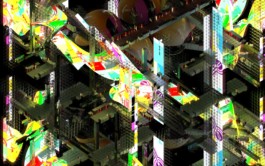
Die Masse täglich generierter digitaler Bilder bildet eine Parallelwelt. Erinnerungen aus dieser Welt bestimmen unsere Erwartungen an physische Orte — Erwartungen, die diese nicht erfüllen können. Der physische Raum wird zur Peripherie der Contentcity. Der [Alb]traum einer leuchtenden, medien- und informationsgeladenen Bilderstadt ist das Ergebnis einer Erkundung des Spannungsfelds [u/dys]topischer Potenziale digitaler Displays, hybrider [Stadt]räume und der durch sie verursachten Informationsflut.




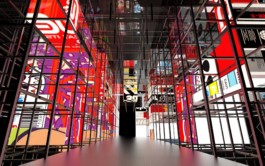
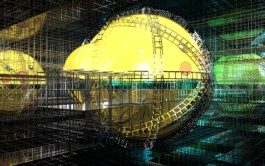
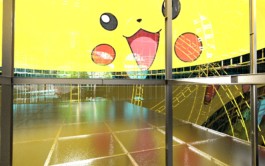

browse
↓
Zum Beginnn des Projekts steht die Überlegung, das ziellose Browsen im Internet als eine digitale Form des Spaziergangs aufzufassen. Die gezeigte atmosphärische Collage verbildlicht die Browse-Erfahrung auf zwei Ebenen. Das Gesehene: Interface, Browser, Fenster, Text, Symbole [grau] und das Gefühlte: Überstimulation, Informationsflut, Euphorie, Kopfschmerz [farbig]. Es folgt der Versuch einer ersten räumlichen Darstellung der Collage.

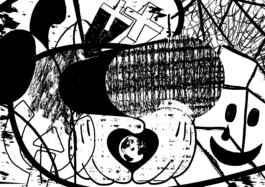



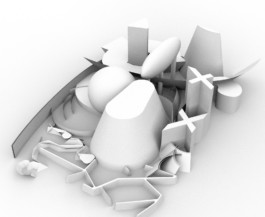


experience
↓
An experience occurs when a company intentionally uses services as the stage, and goods as props, to engage individual customers in a way that creates a memorable event. Commodities are fungible, goods tangible, services intangible, and experiences memorable. (See the chart “Economic Distinctions.”) Buyers of experiences—we’ll follow the lead of experience-economy pioneer Walt Disney and call them “guests”—value what the company reveals over a duration of time. While prior economic offerings—commodities, goods, and services—are external to the buyer, experiences are inherently personal, existing only in the mind of an individual who has been engaged on an emotional, physical, intellectual, or even spiritual level. Thus, no two people can have the same experience, because each experience derives from the interaction between the staged event (like a theatrical play) and the individual’s state of mind.¹
¹B. Joseph Pine II & James H. Gilmore: The Experience Economy
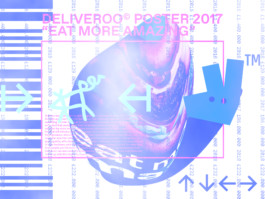

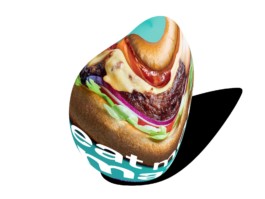

neighboring interests
↓
[2013] Shawn Maximo, Neighboring Interests. Um einen Eindruck von der heutigen Überschneidung von virtueller und realer Welt zu gewinnen, muss man sich lediglich Grenzgebiete des Kommerziellen, wie Schaufenster oder das sogenannte Home Staging, betrachten. Letzteres bezeichnet den aktuellen Trend, Immobilien durch den Einsatz von Möbelattrappen und nachgebildetem Eigentum „wirklicher“ erscheinen zu lassen und somit für potenzielle KäuferInnen attraktiver zu machen. Shawn Maximos Kunst ist von seiner Arbeit als Designer und Architekt geprägt, bei der er Schaufenster für Marken wie Gucci und MAC Cosmetics entwirft und experimentelle Kulissen und virtuelle Renderings mit dem Kunstkollektiv Yemenwed kreiert. Die Überlagerung und das Aufeinanderprallen disparater visueller Referenzen sind ein fester Bestandteil von Maximos künstlerischer Technik; so auch in seiner Reihe Neighboring Interests (2013), für die er Bilder gerendert hat, die spezifische architektonische Räume mit fremdartigen Funktionen kombinieren. Man stelle sich ein Krankenhausbett in der Mitte eines Gastronomiebereiches eines Einkaufszentrums vor, der mit Stühlen des Designers Konstantin Grcic möbliert ist. Das Ergebnis macht auf die fantasiegeladenen Formen der Konsumkultur und der Lifestyle-Werbung aufmerksam – eine Kombination unvereinbarer Stile, die eine absurde Form mit einer dennoch nachvollziehbaren Funktionalität verbindet.¹





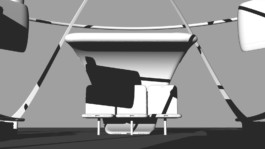
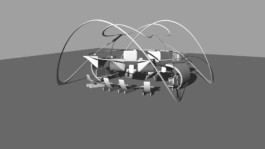


propaganda
↓
[1959] American National Exhibition in Moscow for the U.S.S.R.–U.S.A. exchange in Sokolniki Park. The viewer is overwhelmed. More than anything, the Eameses wanted an emotional response, produced as much by the excess of images as by their content. [...] In every sense, Eames architecture is all about the space of information. The experience for the audience in Moscow was almost overwhelming. Journalists speak of too many images, too much information, too fast. For the Internet generation watching the film today, it would not be fast enough. Coming out of the war mentality, the Eames’s innovations in the world of communication, their exhibitions, films, and multiscreen performance transformed the status of architecture. Their highly controlled flows of simultaneous images provided a space, an enclosure — the kind of space we now occupy continuously without thinking.¹
¹Beatriz Colomina: The Design of Information Overload - A Cold War Story


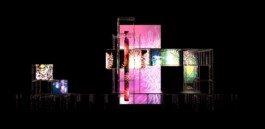
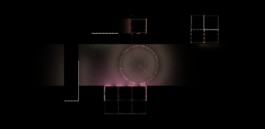
ekstase
↓
[2003] Nigel Coates – Guide to Ecstacity. Ecstacity, the place, is parts of seven cities (Cairo, London, Mumbai [Bombay], New York, Rio, Rome and Tokyo) conjoined and intertwined. Its complexity is difficult to paraphrase, but as Coates writes: ‘half-real and half-imaginary, Ecstacity builds on the increasingly global outlook of existing cities … it partners a fluid architecture of hybrids with the information world we already inhabit … it invests the everyday with conflations of scale, of story, of emotion, replacing institutional power with shared grounds of identity and desire’. Guide to Ecstacity is a visitor’s guide whose six sections – with Leary-esque names like ‘tuning in’, ‘locking on’ and ‘flipping out’ – ‘frame an experiential interface with the city’. Each section simulates the features and shifting dynamics of Ecstacity and its population of Ecstacitizens, and together help the visitor ‘read’ and ‘write’ the city’s sensuous, branded, information-rich narrative. [...] To Coates’s credit, Guide to Ecstacity is candidly declared as a collaboration with David Ellis of Why Not Associates; their goal: an immersive experience in which readers ‘navigate [their] route between the ideas, and … explore [Ecstacity’s] spaces and places as if [they] were really in them.’ As Coates tells it, they attempted ‘a matrix of interrelations within the space defined by the edges, the gutter, the explicit symmetry of the folded paper, and the contiguous nature of the spreads. We joined up dissimilar images, put one picture inside another, or blurred them as if registered in the same moment. We want[ed] to escalate the combined effect of text, image and page as if it were a paradigm for architecture.’ If to graphic designers such descriptions seem commonplace, the approach clearly resonates with other channels of Coates’s practice and, to be sure, it’s a welcome change to hear of graphic design as architecture’s paradigm, rather than the reverse.¹
¹Eye Magazine: Predation and consumption: Adrift in Ecstacity

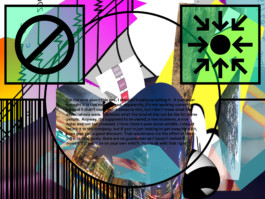

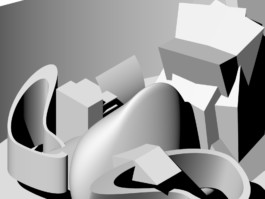
uto-/dystopie
↓

→ ecstacity
imagined place
urban structure
nonlinear narrative
ecstatic
voluntary participation

→ glimpses of the usa
real place
opaque enclosure
highly controlled information
overwhelming
enforced absorption
storyboard
↓

elemente
↓
→ gerüst
→ screen
→ content


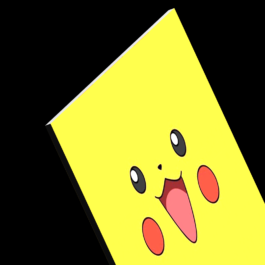



hardware
→ peripherie der contentcity
grenze
→ contentraum┊peripherie
bilder
→ bausteine der contentcity
content
↓
→ ankunft
→ orientierung
→ gewöhnung
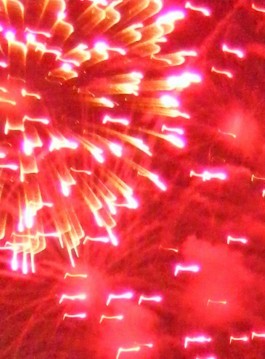
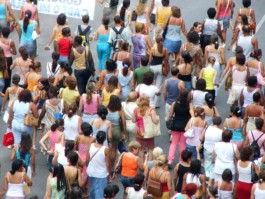

→ alltag
→ begegnung
→ flucht



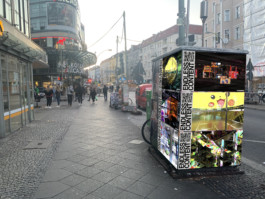
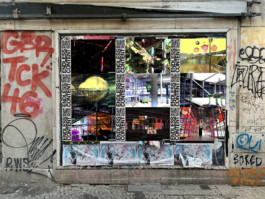
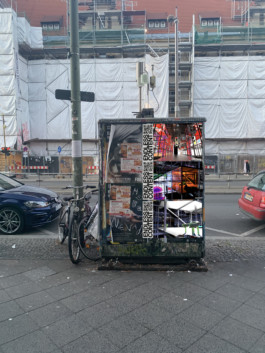
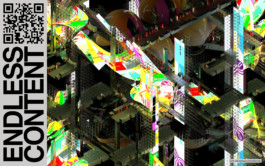


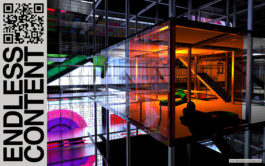

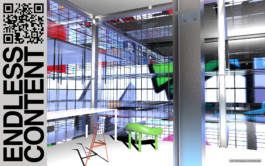

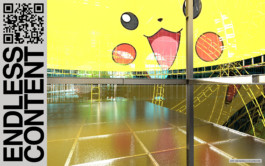

Contentcity Emir Timur Tokdemir
contentcity↓
info→overload↓
visit cc↓
Die Masse täglich generierter digitaler Bilder bildet eine Parallelwelt. Erinnerungen aus dieser Welt bestimmen unsere Erwartungen an physische Orte — Erwartungen, die diese nicht erfüllen können. Der physische Raum wird zur Peripherie der Contentcity. Der [Alb]traum einer leuchtenden, medien- und informationsgeladenen Bilderstadt ist das Ergebnis einer Erkundung des Spannungsfelds [u/dys]topischer Potenziale digitaler Displays, hybrider [Stadt]räume und der durch sie verursachten Informationsflut.







browse
↓
Zum Beginnn des Projekts steht die Überlegung, das ziellose Browsen im Internet als eine digitale Form des Spaziergangs aufzufassen. Die gezeigte atmosphärische Collage verbildlicht die Browse-Erfahrung auf zwei Ebenen. Das Gesehene: Interface, Browser, Fenster, Text, Symbole [grau] und das Gefühlte: Überstimulation, Informationsflut, Euphorie, Kopfschmerz [farbig]. Es folgt der Versuch einer ersten räumlichen Darstellung der Collage.








experience
↓
An experience occurs when a company intentionally uses services as the stage, and goods as props, to engage individual customers in a way that creates a memorable event. Commodities are fungible, goods tangible, services intangible, and experiences memorable. (See the chart “Economic Distinctions.”) Buyers of experiences—we’ll follow the lead of experience-economy pioneer Walt Disney and call them “guests”—value what the company reveals over a duration of time. While prior economic offerings—commodities, goods, and services—are external to the buyer, experiences are inherently personal, existing only in the mind of an individual who has been engaged on an emotional, physical, intellectual, or even spiritual level. Thus, no two people can have the same experience, because each experience derives from the interaction between the staged event (like a theatrical play) and the individual’s state of mind.¹
¹B. Joseph Pine II & James H. Gilmore: The Experience Economy




neighboring interests
↓
[2013] Shawn Maximo, Neighboring Interests. Um einen Eindruck von der heutigen Überschneidung von virtueller und realer Welt zu gewinnen, muss man sich lediglich Grenzgebiete des Kommerziellen, wie Schaufenster oder das sogenannte Home Staging, betrachten. Letzteres bezeichnet den aktuellen Trend, Immobilien durch den Einsatz von Möbelattrappen und nachgebildetem Eigentum „wirklicher“ erscheinen zu lassen und somit für potenzielle KäuferInnen attraktiver zu machen. Shawn Maximos Kunst ist von seiner Arbeit als Designer und Architekt geprägt, bei der er Schaufenster für Marken wie Gucci und MAC Cosmetics entwirft und experimentelle Kulissen und virtuelle Renderings mit dem Kunstkollektiv Yemenwed kreiert. Die Überlagerung und das Aufeinanderprallen disparater visueller Referenzen sind ein fester Bestandteil von Maximos künstlerischer Technik; so auch in seiner Reihe Neighboring Interests (2013), für die er Bilder gerendert hat, die spezifische architektonische Räume mit fremdartigen Funktionen kombinieren. Man stelle sich ein Krankenhausbett in der Mitte eines Gastronomiebereiches eines Einkaufszentrums vor, der mit Stühlen des Designers Konstantin Grcic möbliert ist. Das Ergebnis macht auf die fantasiegeladenen Formen der Konsumkultur und der Lifestyle-Werbung aufmerksam – eine Kombination unvereinbarer Stile, die eine absurde Form mit einer dennoch nachvollziehbaren Funktionalität verbindet.¹









propaganda
↓
[1959] American National Exhibition in Moscow for the U.S.S.R.–U.S.A. exchange in Sokolniki Park. The viewer is overwhelmed. More than anything, the Eameses wanted an emotional response, produced as much by the excess of images as by their content. [...] In every sense, Eames architecture is all about the space of information. The experience for the audience in Moscow was almost overwhelming. Journalists speak of too many images, too much information, too fast. For the Internet generation watching the film today, it would not be fast enough. Coming out of the war mentality, the Eames’s innovations in the world of communication, their exhibitions, films, and multiscreen performance transformed the status of architecture. Their highly controlled flows of simultaneous images provided a space, an enclosure — the kind of space we now occupy continuously without thinking.¹
¹Beatriz Colomina: The Design of Information Overload - A Cold War Story




ekstase
↓
[2003] Nigel Coates – Guide to Ecstacity. Ecstacity, the place, is parts of seven cities (Cairo, London, Mumbai [Bombay], New York, Rio, Rome and Tokyo) conjoined and intertwined. Its complexity is difficult to paraphrase, but as Coates writes: ‘half-real and half-imaginary, Ecstacity builds on the increasingly global outlook of existing cities … it partners a fluid architecture of hybrids with the information world we already inhabit … it invests the everyday with conflations of scale, of story, of emotion, replacing institutional power with shared grounds of identity and desire’. Guide to Ecstacity is a visitor’s guide whose six sections – with Leary-esque names like ‘tuning in’, ‘locking on’ and ‘flipping out’ – ‘frame an experiential interface with the city’. Each section simulates the features and shifting dynamics of Ecstacity and its population of Ecstacitizens, and together help the visitor ‘read’ and ‘write’ the city’s sensuous, branded, information-rich narrative. [...] To Coates’s credit, Guide to Ecstacity is candidly declared as a collaboration with David Ellis of Why Not Associates; their goal: an immersive experience in which readers ‘navigate [their] route between the ideas, and … explore [Ecstacity’s] spaces and places as if [they] were really in them.’ As Coates tells it, they attempted ‘a matrix of interrelations within the space defined by the edges, the gutter, the explicit symmetry of the folded paper, and the contiguous nature of the spreads. We joined up dissimilar images, put one picture inside another, or blurred them as if registered in the same moment. We want[ed] to escalate the combined effect of text, image and page as if it were a paradigm for architecture.’ If to graphic designers such descriptions seem commonplace, the approach clearly resonates with other channels of Coates’s practice and, to be sure, it’s a welcome change to hear of graphic design as architecture’s paradigm, rather than the reverse.¹
¹Eye Magazine: Predation and consumption: Adrift in Ecstacity




uto-/dystopie
↓

→ ecstacity
imagined place
urban structure
nonlinear narrative
ecstatic
voluntary participation

→ glimpses of the usa
real place
opaque enclosure
highly controlled information
overwhelming
enforced absorption
storyboard
↓

elemente
↓
→ gerüst
→ screen
→ content






hardware
→ peripherie der contentcity
grenze
→ contentraum┊peripherie
bilder
→ bausteine der contentcity
content
↓
→ ankunft
→ orientierung
→ gewöhnung



→ alltag
→ begegnung
→ flucht















Contentcity Emir Timur Tokdemir